Archive for May, 2022

Universe Sandbox Roadmap: 2022 & Beyond
May 16th
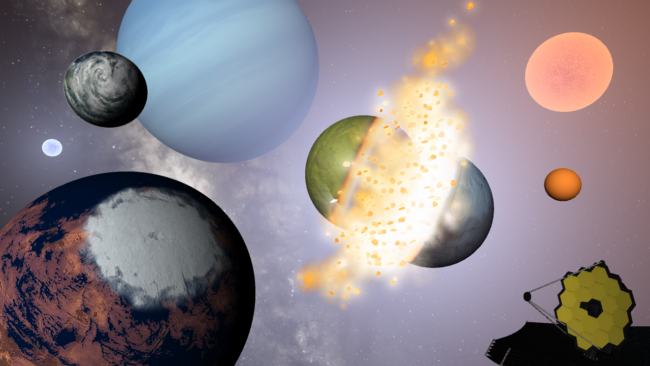
We’re constantly working to make Universe Sandbox even better, and we’ve only scratched the surface. Our plans this year include more materials, rigid body collisions, and more!
But first, what did we do in 2021?
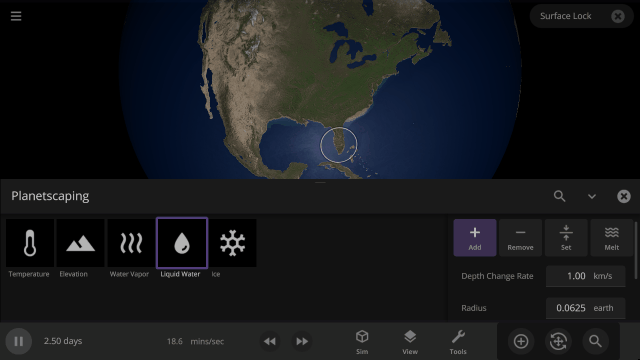
Over the course of 2021, we had 3 major updates and 5 minor updates.
- Splish, Splash, Filling a Bath | Update 26.3
- Oceans fill from lowest to highest elevations (like a bathtub)
- Fast & Flurrious | Update 27
- Snow simulation is more realistic for known and random rocky planets
- Temperature calculations are smoother at high sim speeds
- Clouds in Motion | Update 27.1
- Cloud speed is now simulated from an object’s temperature and rotational speed
- Atmospheric Adjustments | Update 27.2
- Atmosphere Opacity is now simulated (and customization)
- Codename: Fire Ring | Update 28
- Object collisions now have shockwave-based impacts
- Object trails project back in time and show their past trajectory
- My Eyes, the Space Goggles Do Nothing | Update 28.1
- Realistic Object Visibility better reflects what the human eye would see
- Starlite Starbrite | Update 28.2
- Stars now have Absolute and Apparent Magnitudes, which measure their brightness at different distances
- Starlight color on nearby objects updates in real-time
- Planetscaping | Update 29
- Manipulate object surfaces with the Planetscaping (Surface Editing) tool
- Collisions are more realistic with updated frictional forces
View our “What’s New” for a chronological list of changes.
And what have we already done in 2022?
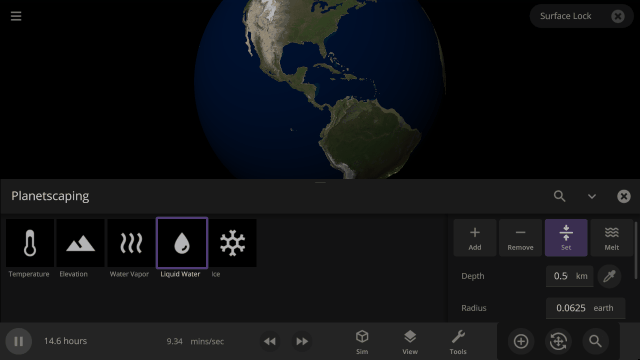
This year has already brought one major and one minor update, both focused on our collision-based goals for the year.
- Consistent Collisions, James Webb, & Planetscaping Tweaks | Update 29.1
- Fragments are now longer-lasting, and collisions are more consistent
- The Planetscaping tool now includes an eyedropper
- Hit Hard, Spin Fast | Update 30
- Spin planets apart at high rotational speeds with the new Force Spin tool
- Similar-size object collisions now symmetrically heat and fragment both objects
What’re we planning to do in 2022?
From simulation improvements to smoothing out our development process, we’re excited about what’s ahead. While we would like to do everything listed here this year, new priorities or unanticipated difficulties might arise and delay our plans.
Stellar Simulation
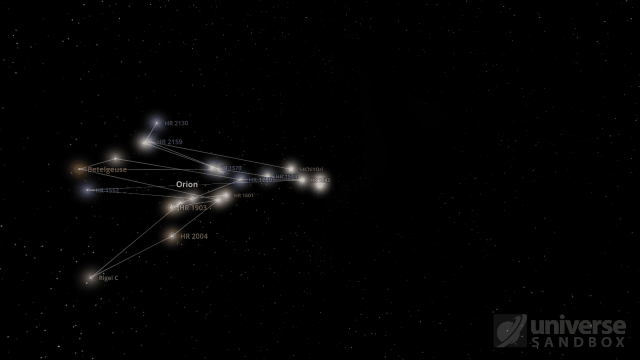
We’re planning to add new star-related features and are working to improve our star simulation.
- Constellations
- We want you to view and interact with Constellations dynamically. This is one of the oldest things on our to-do list.
- To simultaneously simulate the 691 stars for constellations, we’ve been improving performance for star glows, object labels, and more.
- Star Simulation
- Overhauling our current star simulation code to enable smooth star transitions as their properties change is a large task we’re actively working on.
- Revamped star simulation will lay the groundwork for improving stellar evolution.
Physics, Physics, Physics
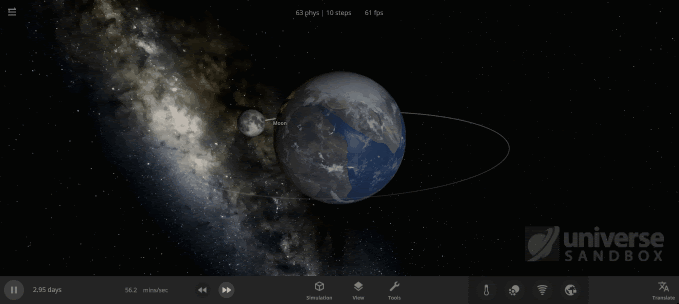
Collision and physics have been and continue to be a significant focus for us this year.
- Rigid Body Physics
- Anybody up for space-bowling? We’re continuing work to add new physics to allow better human-scale interactions (like bowling pins and satellites).
- This new system will serve as the foundation for spacecraft, thrusters, and megastructures in the future.
- Core Engine Rewrite
- As Unity continues to develop their new physics engine based on the Unity Data-Oriented Technology Stack (DOTS) framework, we’ve begun transitioning Universe Sandbox to this new system.
- This massive undertaking will eventually handle most computations in Universe Sandbox and will improve performance, particularly for physics simulation.
- Collisions: Physically Accurate & Overall More Awesome
- Allowing objects in collisions to deform fluidly will create more realistic collisions, including total disintegration.
- Previously we’ve looked into a method called Smoothed-particle hydrodynamics (SPH) for this simulation. However, due to some limitations of that method, we are now exploring other options more suitable for Universe Sandbox, like Positions Based Fluids (PBF) or Fluid-Implicit-Particle (FLIP).
- Rock fragments and gas clouds interacting and collecting more material over time will allow a more realistic planet or moon formation simulation.
- Allowing objects in collisions to deform fluidly will create more realistic collisions, including total disintegration.
Cross-Platform Support
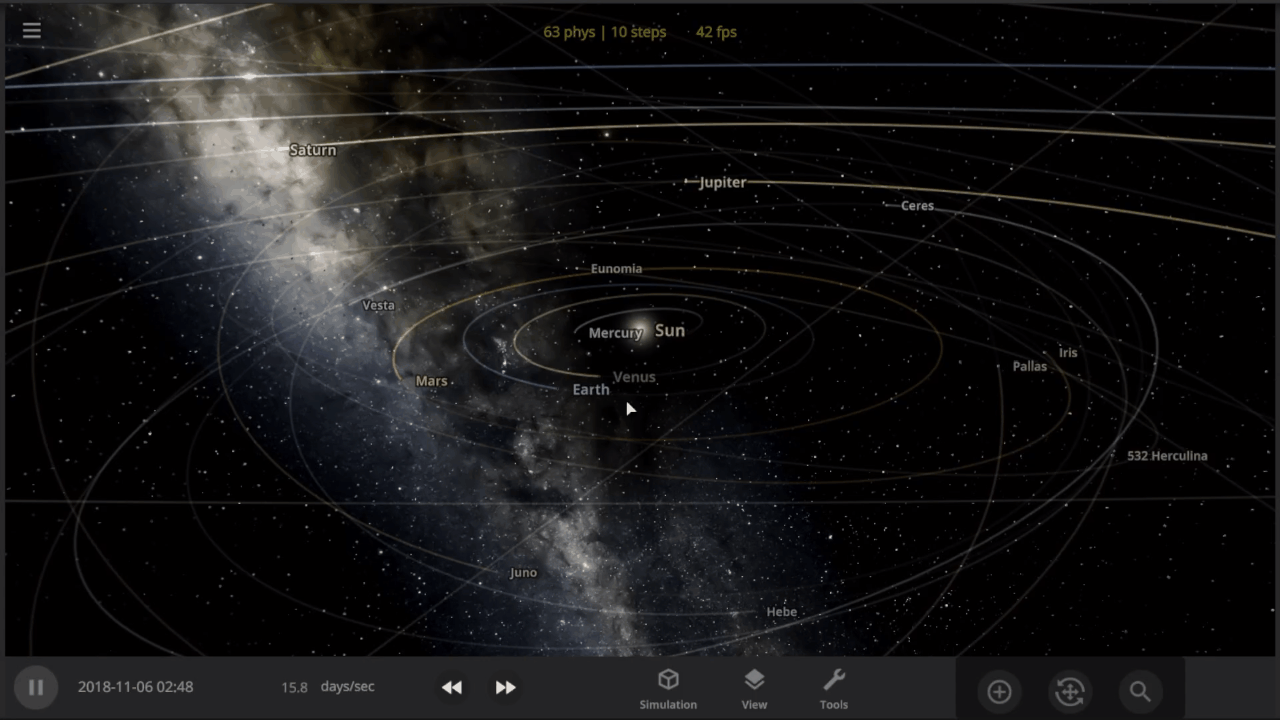
Our progress on the mobile version of Universe Sandbox (iOS and Android) was slower than expected last year, but we’re ramping it up this year.
- The Universe in Your Pocket
- Our two new user interface engineers will help us tackle the remaining challenges of mobile development, like window management on a small screen.
- Our goal is for the mobile version of Universe Sandbox to match the full desktop experience. Learn more in our Mobile DevLog.
- The Universe from Your Couch
- Want to play Universe Sandbox on your couch? Us too! We’ve begun experimenting with gamepad support for the desktop version, which is critical for future console development.
Materials & Beyond
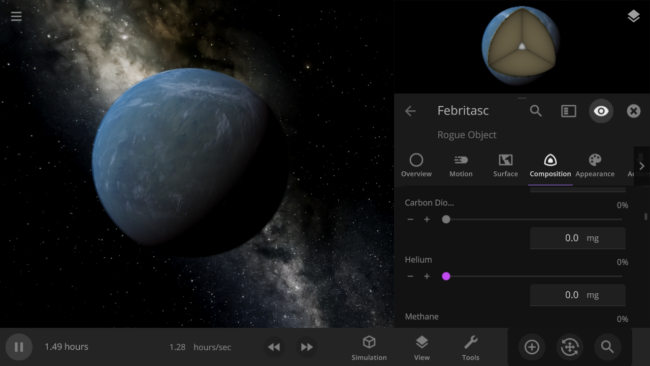
We want you to have access to more of the materials that make up our universe, like sulfur and oxygen, within Universe Sandbox. Adding more materials to our current system will allow better simulation of atmospheres, volatiles, and, eventually, life.
- Building with Basics
- Adding basic materials like methane, necessary for simulating the liquid lakes of methane on Titan, will be the first step for this material system.
- New materials will be included in surface simulation as we track their phase changes and movement across an object’s surface.
- Volatiles
- More materials will allow us to create a more realistic volatiles system, which determines both the composition of fragments and if an object is losing material.
Internal Automation & Testing
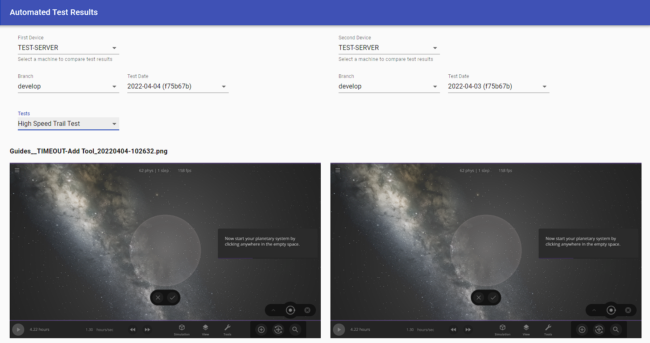
Part of developing Universe Sandbox (or any game) is identifying (and fixing!) bugs as early as possible. To help us with this, we’re creating new internal systems for our team to use to automate our deployment processes and test new and existing features.
- Build Automation
- An updated version, or build, of Universe Sandbox is automatically created every time we make a code change so we can easily playtest new changes.
- Developing tools to build and push new updates to Universe Sandbox automatically lets us get new features and fixes to you faster.
- Feature Testing
- We’re creating a suite of automated tests and setting up a system to compare their results so we can easily see simulation changes or issues.
- These tests can automatically click buttons, record GIFs, and more!
- We’re creating a suite of automated tests and setting up a system to compare their results so we can easily see simulation changes or issues.
Hiring
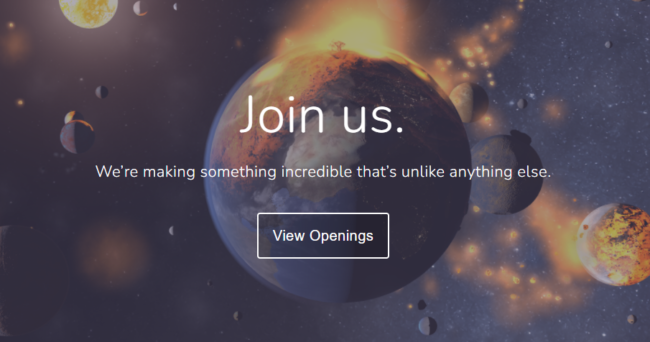
The key to creating a great game like Universe Sandbox is having a great team. Hiring the right people for the job takes time, but is always worthwhile.
- We’re Currently Hiring!
- If you know someone (or you’re someone) who you think would be great for our Cross-Platform Engineer or Spacecraft Physics Engineer positions, tell them to apply.
- If working on Universe Sandbox is your dream job, but we don’t have an open position for you, send us an email. We are always looking for help from the right candidates.
And More
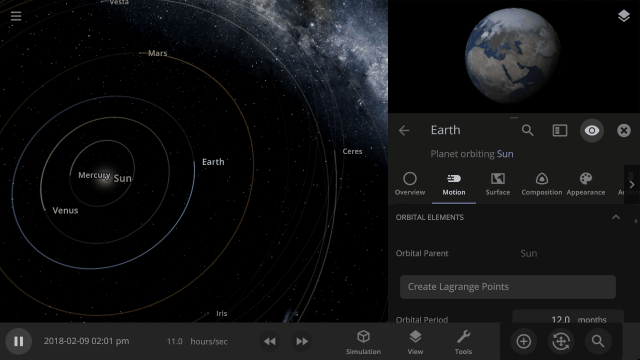
In addition to all of this, we have already
- Done some work to add Lagrange Points
- Started planning an expansion and overhaul of our in-game guide system
- Begun testing to allow access to even more planet customization options
We can’t wait to share this and more with you this year!
